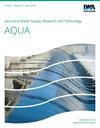薄膜纳米复合膜去除重金属研究进展
IF 4.3
Q2 Environmental Science
引用次数: 0
摘要
快速工业化已成为环境问题,特别是重金属污染的根源之一。包括化学沉淀法和离子交换法在内的多种方法已被用于去除水溶液中的重金属离子,但它们都存在金属去除效率低、试剂损失大、能量消耗大以及当前技术需要进一步发展等缺点。基于膜的技术,如反渗透(RO)和纳滤(NF),由于其高截留率和低二次污染物的形成,在去除重金属方面越来越受欢迎。在考虑的方法中,基于膜的方法最有希望用于废水处理,重点是重金属离子的去除,因为它易于制造,质量优越,分离效率高。由于与严格的选择性标准相比,膜的性能通常受到污染、低渗透性和显著污染物渗透的影响,因此新型膜材料的开发已成为学术界、工业界和国家实验室的一个重要研究领域。因此,我们检讨了以往的措施和技术发展,以期更有效地去除和回收工业废水中的重金属。本文章由计算机程序翻译,如有差异,请以英文原文为准。
Recent advances in heavy metal removal by thin film nanocomposite membrane
Rapid industrialization has become one of the root causes of environmental problems, particularly heavy metal pollution. Numerous methods, including chemical precipitation and ion exchange, have been used to remove heavy metal ions from aqueous solutions, but all of them have drawbacks, such as low metal removal effectiveness, significant reagent loss, excessive energy use, and the need for further development of the current techniques. Membrane-based technologies such as reverse osmosis (RO) and nanofiltration (NF) are gaining popularity in the removal of heavy metals due to their high rejection and low formation of secondary pollutants. Among the methods under consideration, the membrane-based approach holds the most promise for wastewater treatment with a focus on heavy metal ion removal due to its ease of manufacture, superior qualities, and increased separation effectiveness. Since membrane performance is typically hampered by fouling, low permeability, and significant contaminant permeation when compared to strict selectivity criteria, the development of novel membrane materials has emerged as an important area of research for academia, industry, and national laboratories. We have therefore reviewed previous initiatives and technological developments in order to achieve more effective heavy metal removal and recovery from industrial wastewater.
求助全文
通过发布文献求助,成功后即可免费获取论文全文。
去求助
来源期刊
CiteScore
4.70
自引率
0.00%
发文量
74
审稿时长
4.5 months
期刊介绍:
Journal of Water Supply: Research and Technology - Aqua publishes peer-reviewed scientific & technical, review, and practical/ operational papers dealing with research and development in water supply technology and management, including economics, training and public relations on a national and international level.

 求助内容:
求助内容: 应助结果提醒方式:
应助结果提醒方式:


